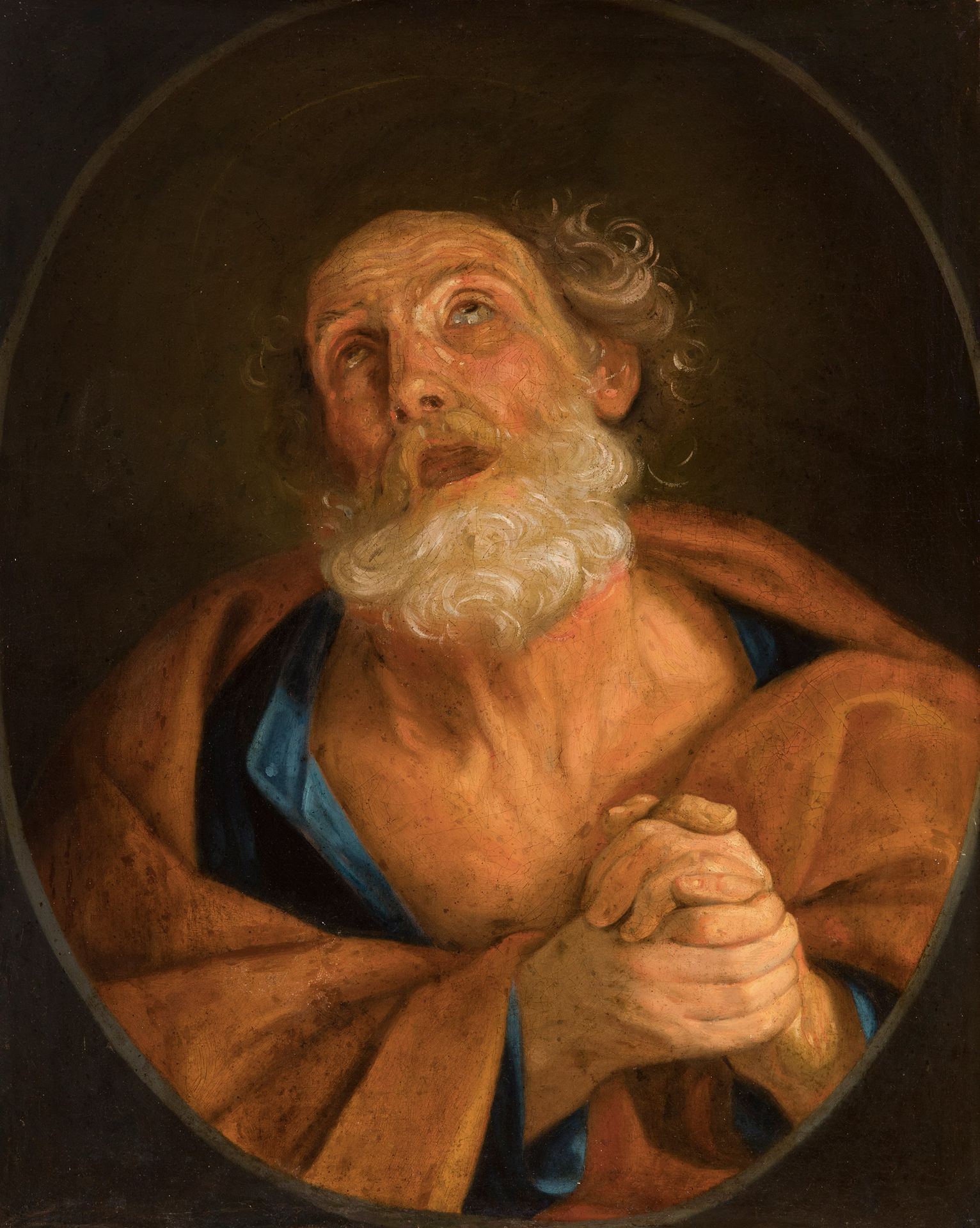Description
Italian school; 17th century. "The Tears of St. Peter". Oil on canvas. It presents restorations and repainting on the pictorial surface. Measurements: 74 x 59 cm. The artist of this work simulates an oval frame in the perimeter of the work, in such a way that the main subject is much more emphasized and theatricalized. In the centre of the image and in the foreground, strongly illuminated, is the bust of St. Peter against a dark, neutral background, which enhances the figure's corporeality and at the same time helps to focus attention on the figure. Saint Peter is weeping, looking up at the sky. In this image, the artist opts for a sober representation based on the sentiment and pathos of the protagonist's attitude. St. Peter is shown before the viewer without his iconographic attributes such as the keys, or even the presence of the cockerel, which is customary in the representation of the theme of St. Peter's tears, as it helps to establish a temporal context of the biblical story, in which St. Peter had already denied Christ three times. According to Professor Pérez Sánchez, it seems that El Greco was the first artist to give independent form to this iconographic type of The Tears of Saint Peter, which, due to its ability to express intensely two of the fundamental aspects of the Tridentine reform, repentance and penitence, was particularly popular in Baroque Spain. El Greco's work, painted in the 1580s and now in the Bowes Museum in England, combines the image of Saint Peter's repentance in the foreground, half-length and with his hands clasped, with a landscape background in which the Resurrection of Christ can be seen in the very distant foreground. Saint Peter (Bethsaida, c. 1 BC - Rome, 67) was, according to the New Testament, a fisherman, known as one of Jesus' twelve apostles. The Catholic Church identifies him through the apostolic succession as the first Pope, based among other things on Jesus' words to him: "You are Peter, and on this rock I will build my Church, and the power of Death shall not prevail against it. I will give you the keys of the Kingdom of Heaven. Whatever you bind on earth shall be bound in heaven, and whatever you loose on earth shall be loosed in heaven". St. Peter could be said to have been Jesus' confessor, his closest disciple, the two being united by a very special bond, as narrated in both the canonical and apocryphal Gospels.
63
Italian school; 17th century. "The Tears of St. Peter". Oil on canvas. It presents restorations and repainting on the pictorial surface. Measurements: 74 x 59 cm. The artist of this work simulates an oval frame in the perimeter of the work, in such a way that the main subject is much more emphasized and theatricalized. In the centre of the image and in the foreground, strongly illuminated, is the bust of St. Peter against a dark, neutral background, which enhances the figure's corporeality and at the same time helps to focus attention on the figure. Saint Peter is weeping, looking up at the sky. In this image, the artist opts for a sober representation based on the sentiment and pathos of the protagonist's attitude. St. Peter is shown before the viewer without his iconographic attributes such as the keys, or even the presence of the cockerel, which is customary in the representation of the theme of St. Peter's tears, as it helps to establish a temporal context of the biblical story, in which St. Peter had already denied Christ three times. According to Professor Pérez Sánchez, it seems that El Greco was the first artist to give independent form to this iconographic type of The Tears of Saint Peter, which, due to its ability to express intensely two of the fundamental aspects of the Tridentine reform, repentance and penitence, was particularly popular in Baroque Spain. El Greco's work, painted in the 1580s and now in the Bowes Museum in England, combines the image of Saint Peter's repentance in the foreground, half-length and with his hands clasped, with a landscape background in which the Resurrection of Christ can be seen in the very distant foreground. Saint Peter (Bethsaida, c. 1 BC - Rome, 67) was, according to the New Testament, a fisherman, known as one of Jesus' twelve apostles. The Catholic Church identifies him through the apostolic succession as the first Pope, based among other things on Jesus' words to him: "You are Peter, and on this rock I will build my Church, and the power of Death shall not prevail against it. I will give you the keys of the Kingdom of Heaven. Whatever you bind on earth shall be bound in heaven, and whatever you loose on earth shall be loosed in heaven". St. Peter could be said to have been Jesus' confessor, his closest disciple, the two being united by a very special bond, as narrated in both the canonical and apocryphal Gospels.
